For convenience, here is an index of my Silverweed related content.
The updates are coming thick and fast, now that the harvest season has arrived.
This is a mini-update about a F2 generation of seedlings. These are children of a mixture of geographically dispersed Silverweeds gathered for the first time in perhaps thousands of years. If they were human, it would be one hell of a reunion party. As a reminder, the parents are from
the Isle of Skye (in the far North East of Scotland),
North West of England
Possibly a Canada/English (Yorkshire) mix
Denmark
I have no idea what has crossed with what, but the result is a diverse range of leaf shapes, sizes and colours.

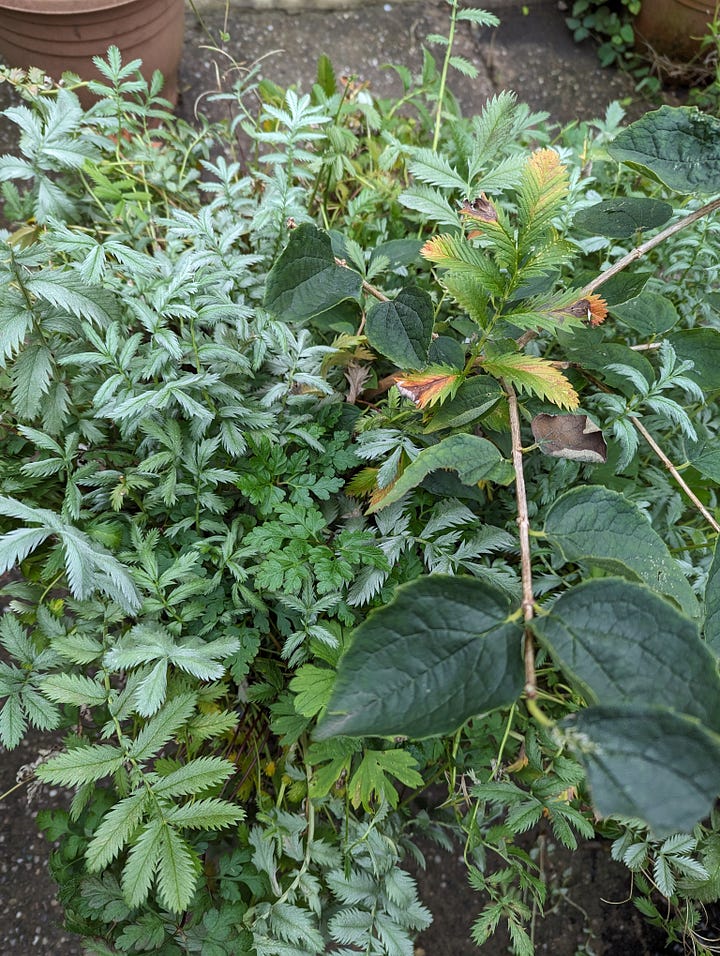
Some leaves are exceptionally covered in light down (and so very silvery as their namesake suggests) whilst others have a lot less down and should probably be called Greenweed.
Some exhibit extreme alternation in leaf growth and others very opposite growth. Alternation in plant morphological parlance is when the leaves do not oppose each other - if there’s a leaf on one side of a stem, there isn’t one on the other. Similarly, opposite growth is when the leaves are very symmetrical; where there is one leaf on the stem, there’s another.
If you’d like to, you can dive deeply into all the ways Silverweed leaves have been observed to be different.
Some have the tendency to grow high up, whilst others have a lower habit. The higher habit growth has attempted to escape the pot already.
As an aside, here’s a close up of a spreading Silverweed stolon. This little marvel is one of the reasons why Silverweed is regarded as a rampant weed. If it can wedge these roots into any crevice it’ll burrow down and establish itself rapidly.
As well as exhibiting huge variety in leaf shape, these children are exceptionally vigorous. Why do I know this? They managed to collectively to become rootbound in a 60 litre pot from a standing start.
Behold.
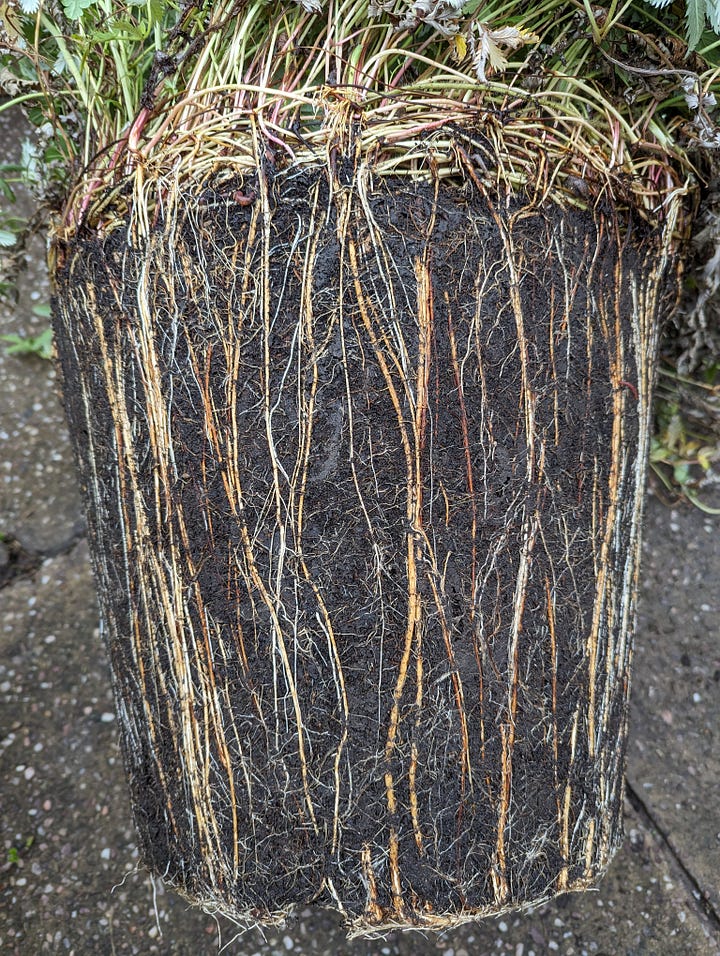
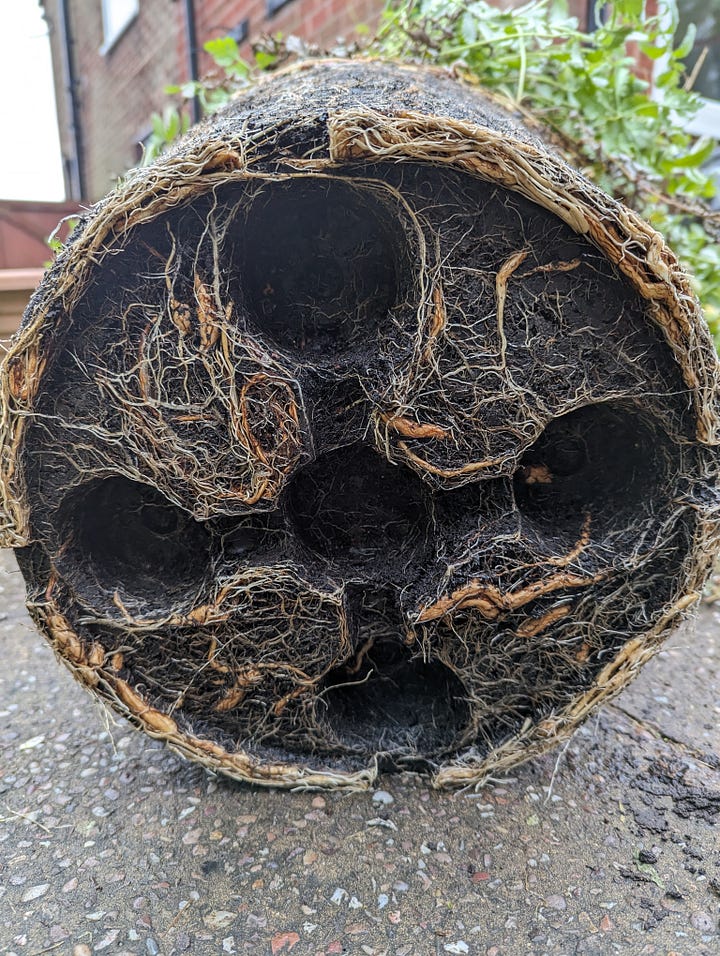
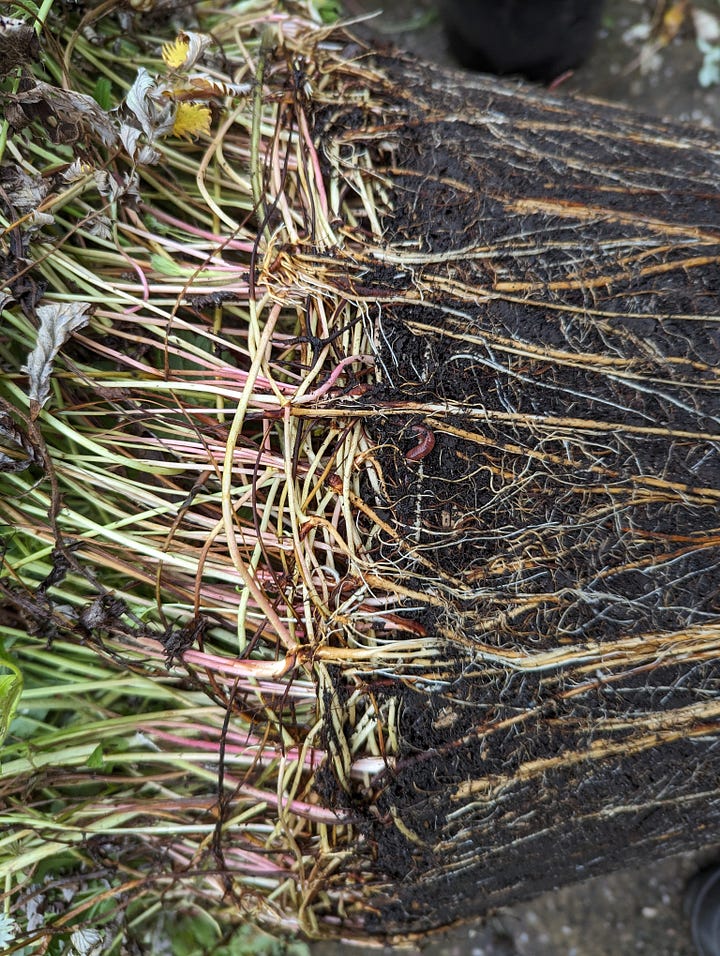
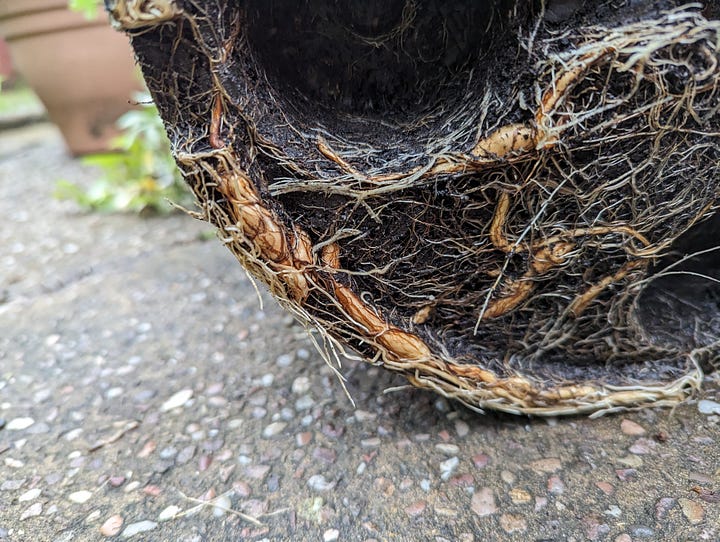
These tap roots certainly deserve the name. They plunge straight as an arrow straight to the bottom of the pot and immediately begin to girdle themselves.
In terms of tap root diameter, I’ve not particularly noticed any thicker ones. There’s two schools of thoughts for this. Hold on and hope for a particularly large outlier or incrementally pick the slightly thicker root until we get noticeable improvements.
I’ve separated out this bundle of children into smaller clumps, ready to be unleashed onto my allotment. I’ll gather up the seeds from the children of these children and distribute them to willing volunteers for on growing and further selection.
I hope my allotment neighbours are ready.




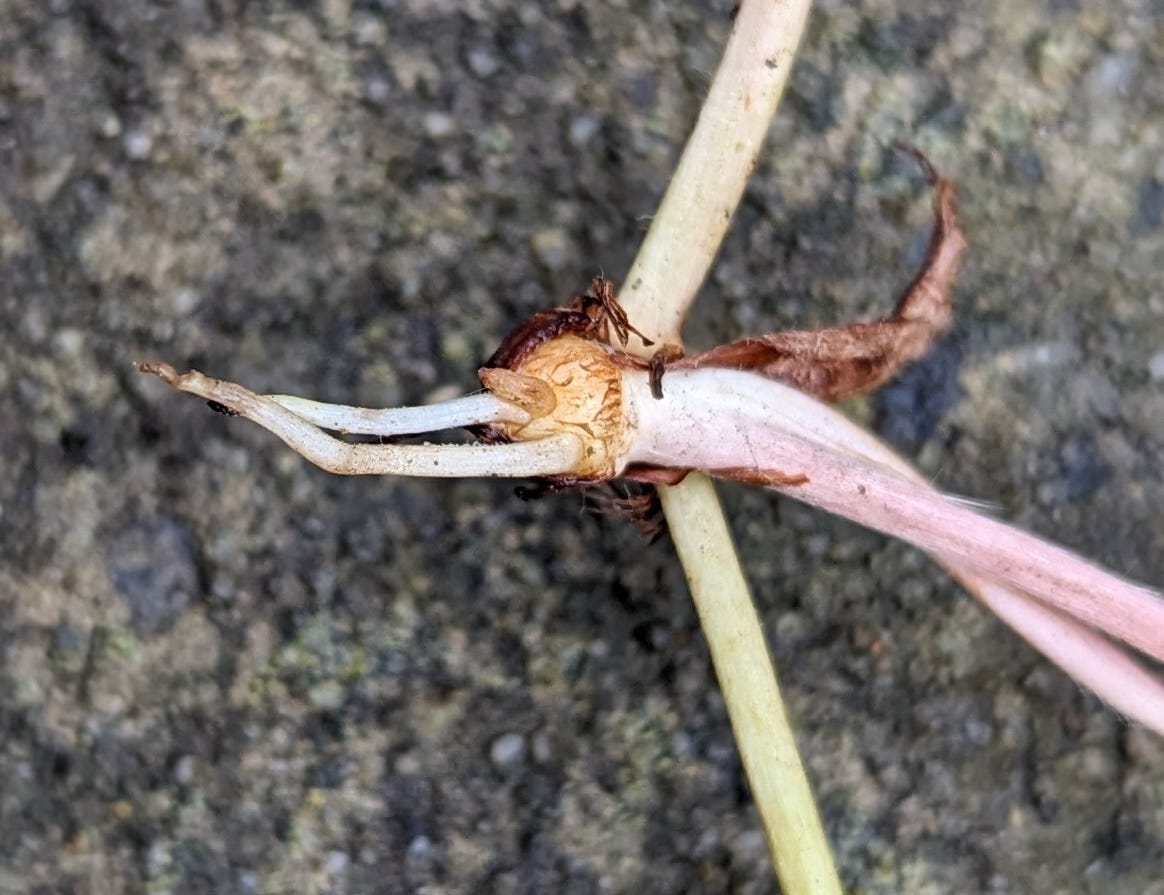
Great to see you unleashing the power of smooshing genetics together from distant lands. Do you think the hybrids have increased vigor yet even if the roots havent sized up much yet?